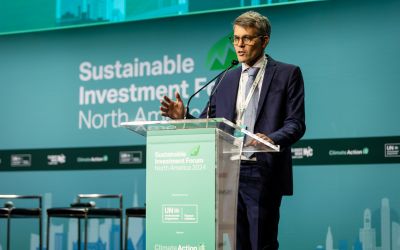How to decarbonize the 1,000 most CO2-intensive assets
The likelihood of complying with the Paris Agreement and limiting global warming to 1.5°C currently stands at just 14%, necessitating a substantial leap in sustainability efforts. Roland Berger's recent study “Global Carbon Restructuring Plan (GCRP)”, shows that decarbonizing the 1,000 most carbon-intensive assets could significantly improve these odds.

The likelihood of complying with the Paris Agreement and limiting global warming to 1.5°C currently stands at just 14%, necessitating a substantial leap in sustainability efforts. Roland Berger's recent study “Global Carbon Restructuring Plan (GCRP)”, shows that decarbonizing the 1,000 most carbon-intensive assets could significantly improve these odds. These assets, including power plants and steel factories, collectively emit 8.2 gigatons (Gt) of CO2, comprising 22% of global fossil-fuel-based emissions.
To meet the 1.5°C target, the world must eliminate 24 Gt of CO2 emissions by 2030. Remarkably, a third of this goal could be achieved by decarbonizing a very small group of assets. Notably, coal-fired power plants contribute 76% of these emissions, with iron and steel plants adding 18%. Over half of the assets are in China, followed by India (13%), the United States (10%), and Europe (3%).
Ownership of the 1,000 assets is concentrated among 406 companies, with just 40 firms owning half of them. This concentration provides a unique opportunity for decisive action by a small number of businesses to significantly enhance climate protection.
Here, the GCRP outlines four potential decarbonization solutions: renewable energy, gas, nuclear, and carbon capture and storage (CCS). Renewables and nuclear can achieve a 100% reduction in CO2 emissions, while CCS can reduce them by 90%. Gas, seen as an interim solution, can only achieve a 50% reduction. The estimated costs over 26 years (2025-2050) range from USD 7.5 trillion for renewables to 10.5 trillion for nuclear and CCS, representing less than 20% of global annual military or R&D spending.
Considering the financial aspect, asset owners need solutions that cut emissions while ensuring a secure and profitable energy supply. Renewables, nuclear, and gas meet these criteria, but CCS requires a more widespread CO2 pricing scheme to become profitable.
While there's no one-size-fits-all approach to decarbonization, the study emphasizes that renewable energy sources are currently the most suitable solution for many power sector assets. They can eliminate CO2 emissions at the lowest cost and are financially viable in most regions.
The GCRP emphasizes that collective action is crucial to address climate change effectively. Overcoming technological and financial challenges necessitates collaboration between regions, governments, companies, and financiers. Embracing the proposed steps in the GCRP represents a significant move in the right direction. By focusing on actions with the most substantial impact, the global community can generate momentum for change and work towards a cleaner, financially sustainable future.
Access to the full version of the Global Carbon Restructuring Plan here.






